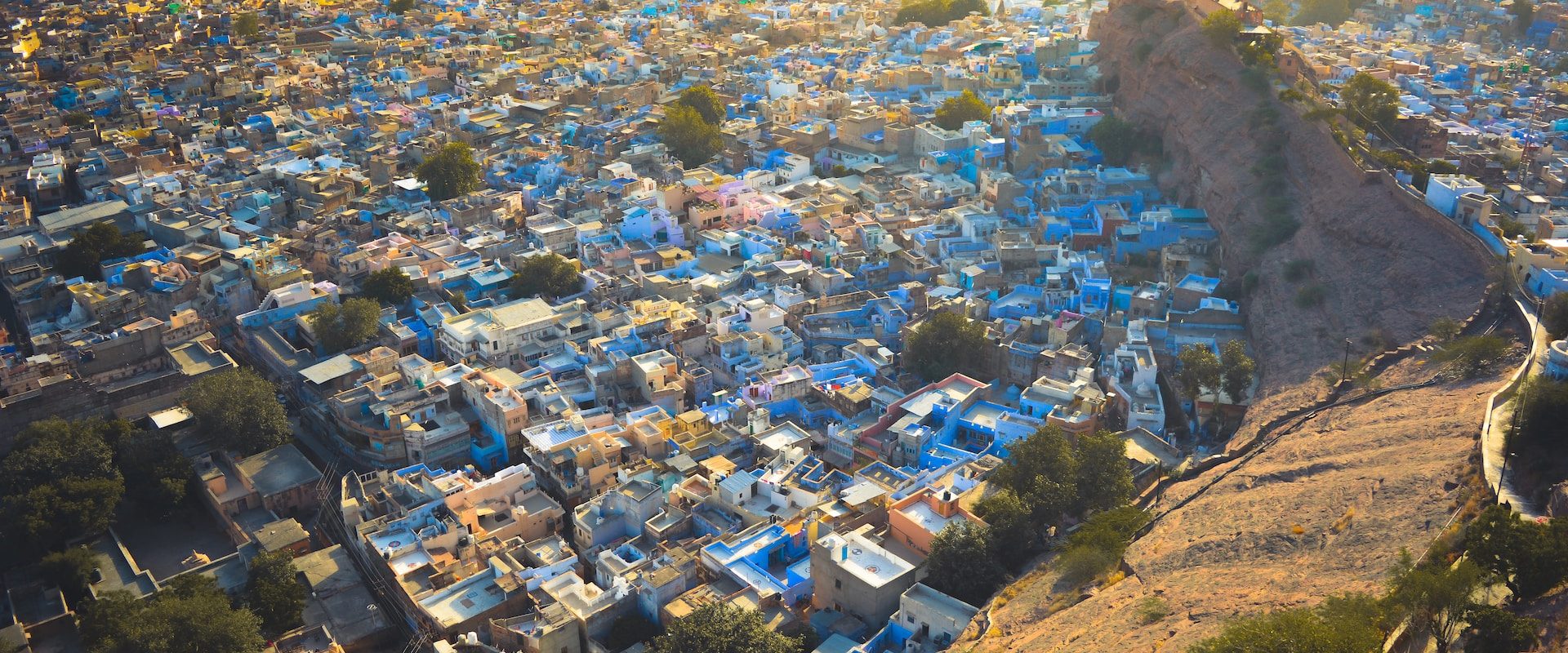
Jodhpur-Book a trip here
A DELIGHTFUL BLEND OF THE MODERN AND THE TRADITIONAL
Jodhpur, the second largest city in Rajasthan is popularly known as the Blue City. The name is clearly befitting as most of the architecture – forts, palaces, temples, havelis and even houses are built in vivid shades of blue. The strapping forts that tower this magnificent city sum up to a spectacle you would not want to miss. The mammoth, imposing fortress of Mehrangarh has a landscape dominating a rocky ridge with the eight gates leading out of the fortress. The new city is located outside the structure. Jodhpur is also known for the rare breed of horses known as Marwari or Malani, which are only found here.
Jodhpur marks its origin back to the year of 1459 AD. The history of this prosperous city revolves around the Rathore clan. Rao Jodha, the chief of Rathore Clan is credited with the origin of Jodhpur in India. The city is known to be built in place of the ancient capital, Mandore of the state of Manwar. Hence, the people of Jodhpur and surrounding areas are commonly known as Marwaris. Also, it is believed that the relics of Mandore can still be witnessed in the Mandore Gardens.
MEHRANGARH FORT
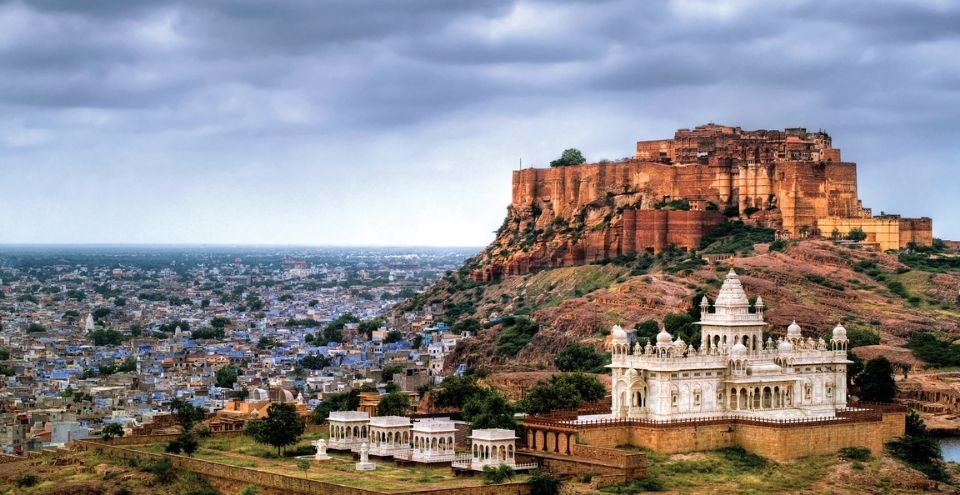 Rising perpendicular and impregnable from a hill which is 125 metres above Jodhpur’s skyline is the Mehrangarh Fort. This historic fort is one of the most famous in India and is packed with history and legends. Mehrangarh Fort still bears the imprints of cannonball attacks courtesy the armies of Jaipur on its second gate. Chiselled and sturdy, the fort is known for its exquisite latticed windows, carved panels, intricately decorated windows and walls of Moti Mahal, Phool Mahal and Sheesh Mahal.
Rising perpendicular and impregnable from a hill which is 125 metres above Jodhpur’s skyline is the Mehrangarh Fort. This historic fort is one of the most famous in India and is packed with history and legends. Mehrangarh Fort still bears the imprints of cannonball attacks courtesy the armies of Jaipur on its second gate. Chiselled and sturdy, the fort is known for its exquisite latticed windows, carved panels, intricately decorated windows and walls of Moti Mahal, Phool Mahal and Sheesh Mahal.
KHEJARLA FORT
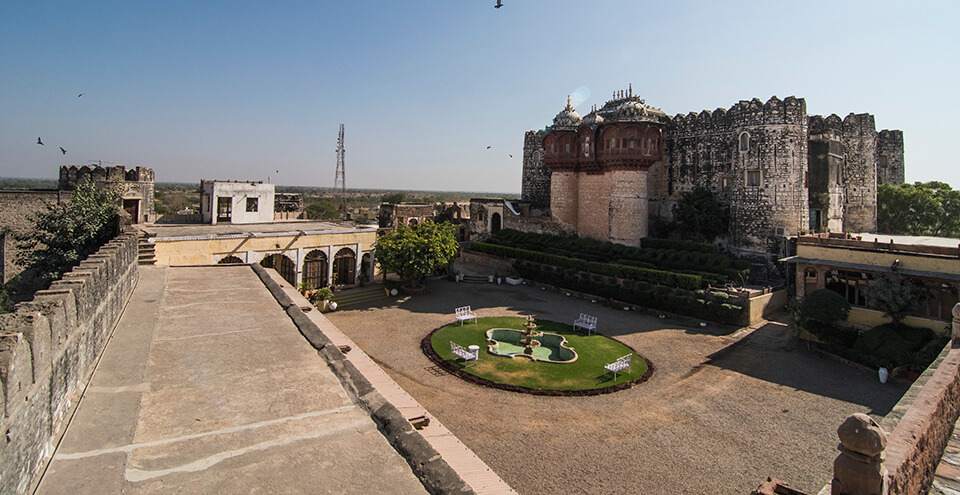 Located 85 kilometres from the main city, the 400-year old Khejarla Fort is situated in a rural setting. The stunning red sandstone monument, now a hotel, is an example of Rajput architecture. Visitors will be mesmerised by the fort’s picturesque settings, latticework friezes and intricate Jharokas.
Located 85 kilometres from the main city, the 400-year old Khejarla Fort is situated in a rural setting. The stunning red sandstone monument, now a hotel, is an example of Rajput architecture. Visitors will be mesmerised by the fort’s picturesque settings, latticework friezes and intricate Jharokas.
UMAID BHAWAN PALACE
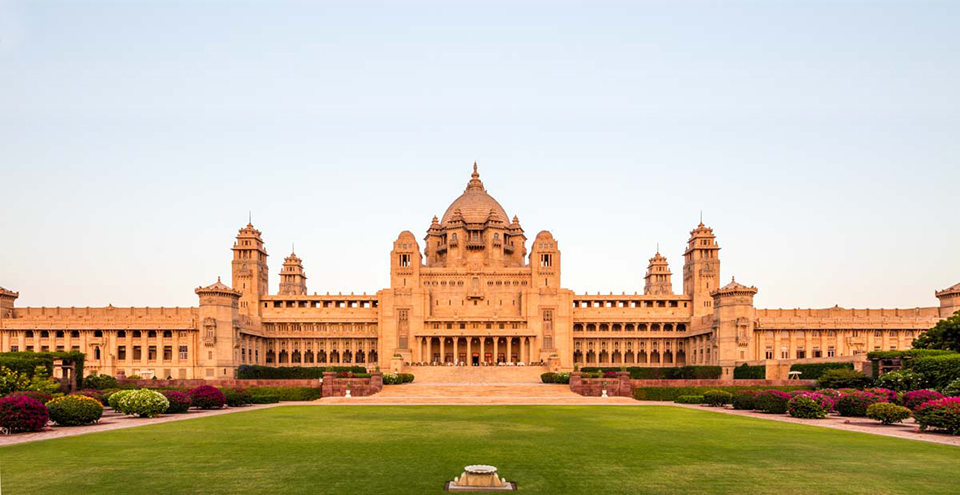 Umaid Bhawan Palace was built by Maharaja Umaid Singh in 1929 to counter a famine which had hit the state at the time. It was also known as the Chittar Palace while being constructed thanks to the use of stones drawn from the Chittar hill. The palace was designed by HV Lanchester, a renowned British architect, and was completed in 16 years. Built with sandstone and marble, the architecture of the palace is described as a blend of lndo-Saracenic, Classical Revival and Western Art Deco styles. It is recognised as one of the largest private homes in the world and also one of the more spectacular buildings. It is the only palace built in the 20th century.
Umaid Bhawan Palace was built by Maharaja Umaid Singh in 1929 to counter a famine which had hit the state at the time. It was also known as the Chittar Palace while being constructed thanks to the use of stones drawn from the Chittar hill. The palace was designed by HV Lanchester, a renowned British architect, and was completed in 16 years. Built with sandstone and marble, the architecture of the palace is described as a blend of lndo-Saracenic, Classical Revival and Western Art Deco styles. It is recognised as one of the largest private homes in the world and also one of the more spectacular buildings. It is the only palace built in the 20th century.
MOTI MAHAL
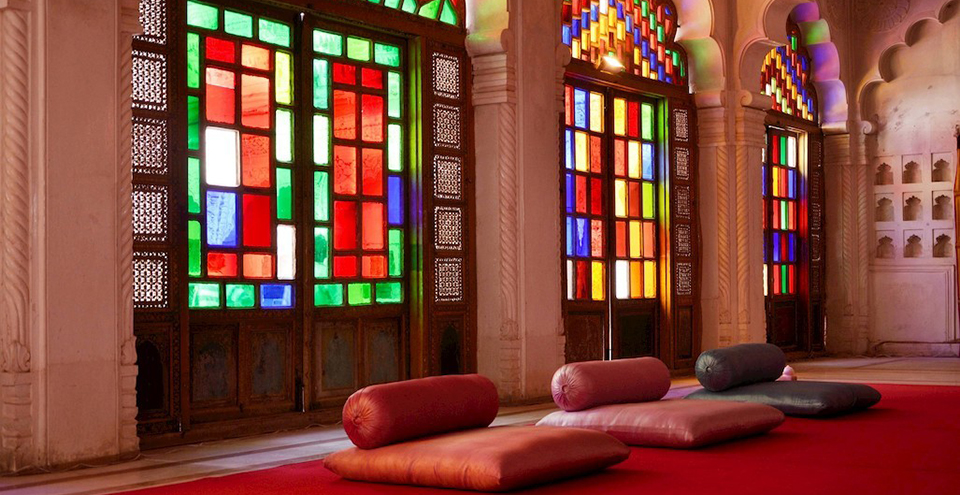
Moti Vilas Palace Mehrangarh Fort Jodhpur Rajasthan India Asia
Moti Mahal, as the name suggests, is the Pearl Hall where the royal families held their audience. The hall is known to have glass windows and five nooks that enabled the queens to listen to the proceedings taking place in the Sringar Chowki, The Royal Throne of Jodhpur.
SHEESH MAHAL
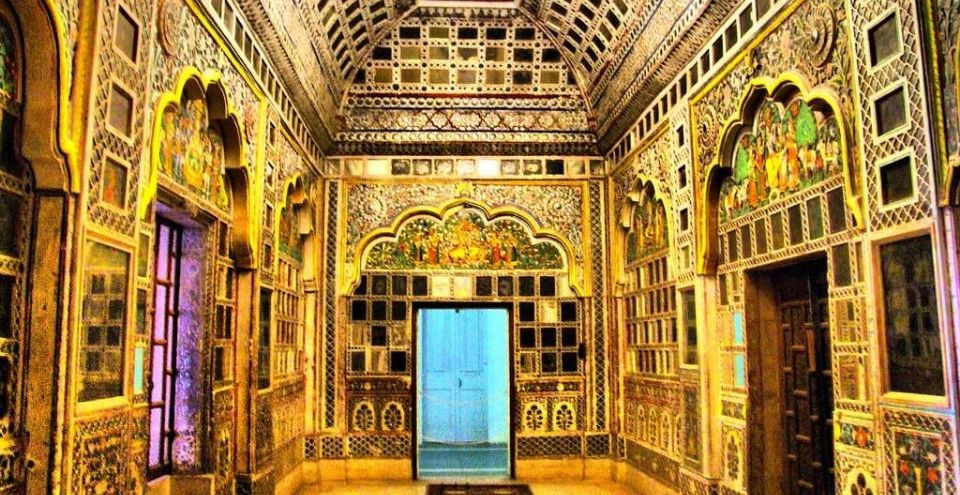 Situated within the compound of Mehrangarh Fort is the glass palace of Jodhpur, popularly known as Sheesh Mahal. This magnificent piece of architecture is adorned with walls of mirror work that stretch across ceilings and to the floors. It is superimposed by the mirror work of brightly painted religious figures cast in plaster.
Situated within the compound of Mehrangarh Fort is the glass palace of Jodhpur, popularly known as Sheesh Mahal. This magnificent piece of architecture is adorned with walls of mirror work that stretch across ceilings and to the floors. It is superimposed by the mirror work of brightly painted religious figures cast in plaster.
PHOOL MAHAL
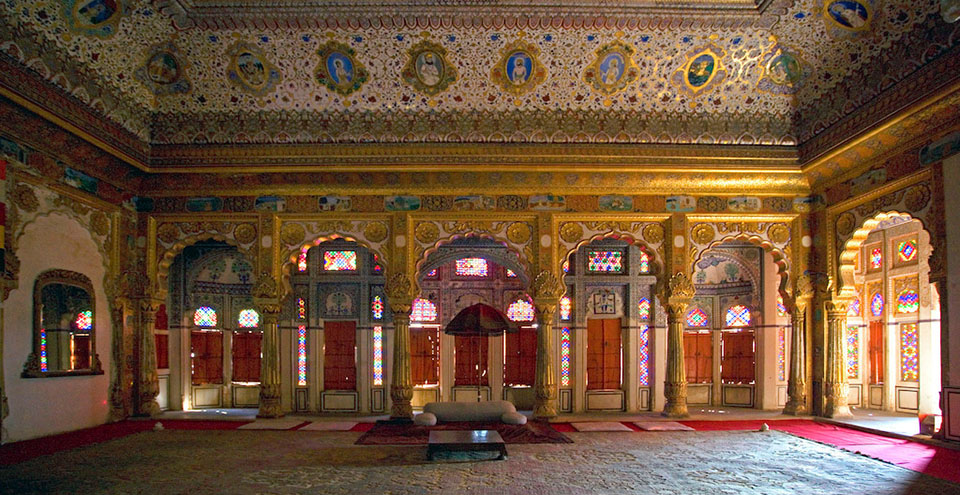 Going by the name, the Phool Mahal or Flower Hall is the most exorbitant of all the halls in the palace. This beautiful chamber is said to be the pleasure dome for the Maharajas. The gold used for constructing the Mahal came from Ahmedabad, Gujarat.
Going by the name, the Phool Mahal or Flower Hall is the most exorbitant of all the halls in the palace. This beautiful chamber is said to be the pleasure dome for the Maharajas. The gold used for constructing the Mahal came from Ahmedabad, Gujarat.
CHAMUNDA MATAJI TEMPLE
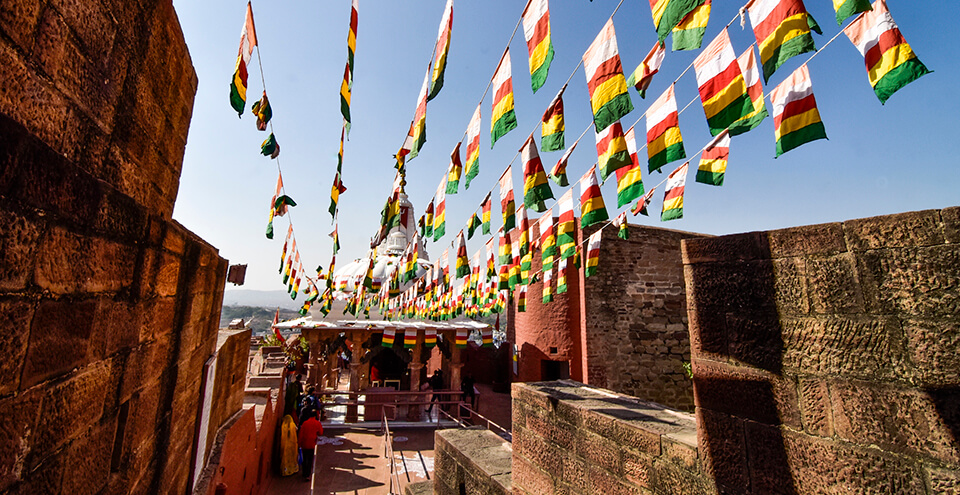 Chamunda Mataji was Rao Jodha’s favourite goddess and so her idol was bought to the Mehrangarh Fort. Thus, the fort became a place of worship and was turned into a temple. Since then, locals have followed the culture of worshipping Chamunda Mata. In fact, till date, the goddess remains the Isht Devi (the adopted goddess) of Maharajas and the royal family.
Chamunda Mataji was Rao Jodha’s favourite goddess and so her idol was bought to the Mehrangarh Fort. Thus, the fort became a place of worship and was turned into a temple. Since then, locals have followed the culture of worshipping Chamunda Mata. In fact, till date, the goddess remains the Isht Devi (the adopted goddess) of Maharajas and the royal family.
RANISAR PADAMSAR
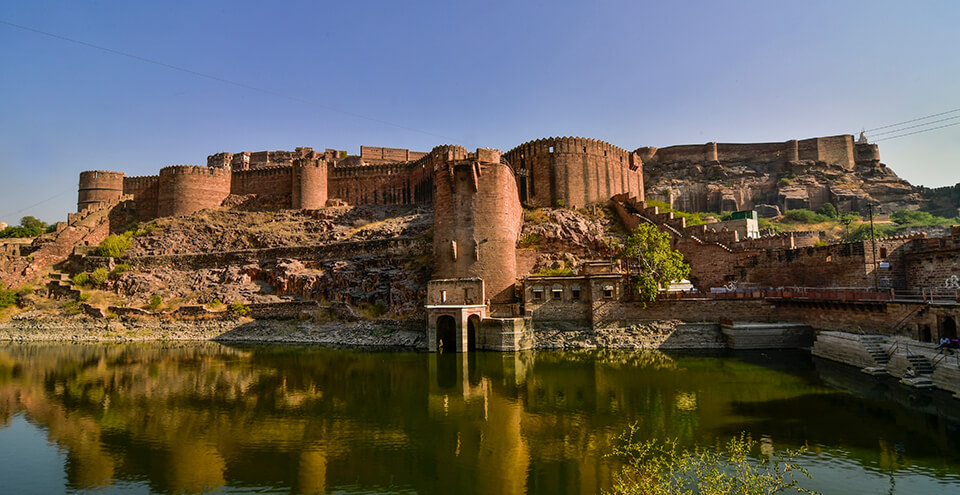 Located near the Fateh Pole in Mehrangarh, the Ranisar and Padmasar are adjacent lakes that were constructed in the year 1459. Ranisar Lake was built on orders of Queen Jasmade Hadi, Rao Jodha’s wife while Padmasar Lake was ordered by Queen Padmini of Rao Ganga, daughter of Rana Sanga of Mewar.
Located near the Fateh Pole in Mehrangarh, the Ranisar and Padmasar are adjacent lakes that were constructed in the year 1459. Ranisar Lake was built on orders of Queen Jasmade Hadi, Rao Jodha’s wife while Padmasar Lake was ordered by Queen Padmini of Rao Ganga, daughter of Rana Sanga of Mewar.
JODHPUR GOVERNMENT MUSEUM
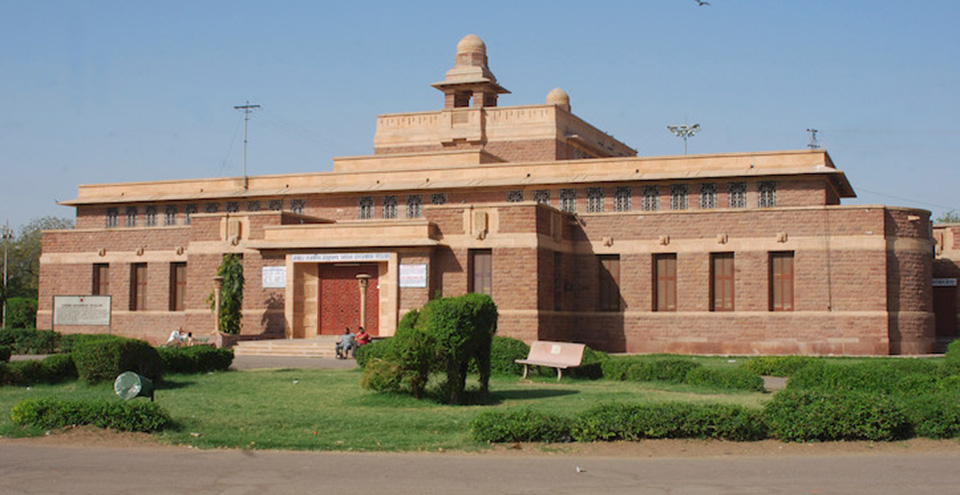
Sardar Government Museum Ummed Umaid Public Bagh ; Jodhpur ; Rajasthan ; India
The government museum, located in Umaid Garden, houses a rich collection of relics including armoury, textiles, local art and crafts, miniature paintings, portraits of rulers, manuscripts and images of the Jain Tirthankaras. Wildlife lovers can also visit the zoo, which is located close by.
JASWANT THADA
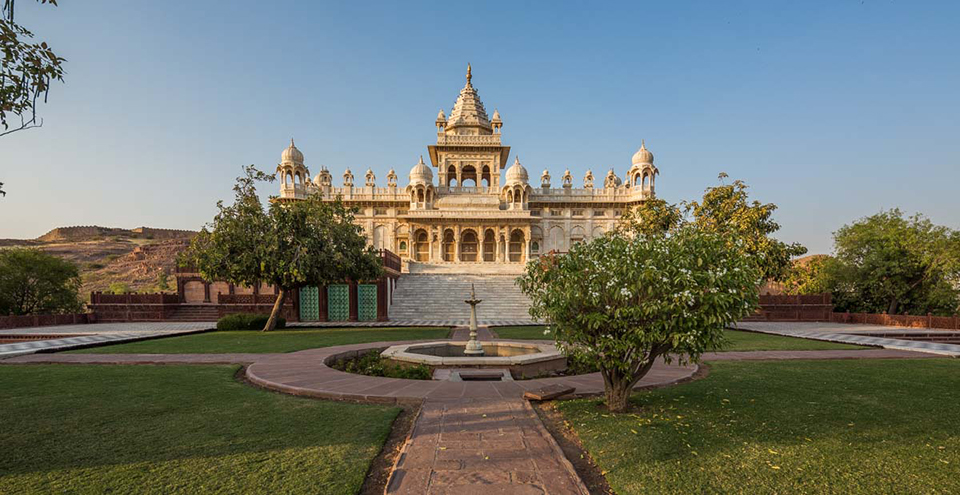 This milky white memorial built towards the end of the 19th century as a tribute to the leader Jaswant Singh is a huge tourist attraction. Jaswant Singh, who ruled Jodhpur, invested well in his state. He made attempts to bring down the level of crime, subdue dacoits, built railways and broadly worked on raising the economy of Marwar. Jaswant Thada is managed and looked after by the Mehrangarh Museum Trust (MMT) and is open to public. The Trust is operating a Museum in Jaswant Thada displaying portraits of Marwar rulers along with informative didactics – the information serves as orientation space to understand the history of Marwar through the Portraits. Its grounds serve as a serene venue for morning concerts during music festivals such as the Rajasthan International Folk Festival and the World Sacred Spirit Festival.
This milky white memorial built towards the end of the 19th century as a tribute to the leader Jaswant Singh is a huge tourist attraction. Jaswant Singh, who ruled Jodhpur, invested well in his state. He made attempts to bring down the level of crime, subdue dacoits, built railways and broadly worked on raising the economy of Marwar. Jaswant Thada is managed and looked after by the Mehrangarh Museum Trust (MMT) and is open to public. The Trust is operating a Museum in Jaswant Thada displaying portraits of Marwar rulers along with informative didactics – the information serves as orientation space to understand the history of Marwar through the Portraits. Its grounds serve as a serene venue for morning concerts during music festivals such as the Rajasthan International Folk Festival and the World Sacred Spirit Festival.
GHANTA GHAR
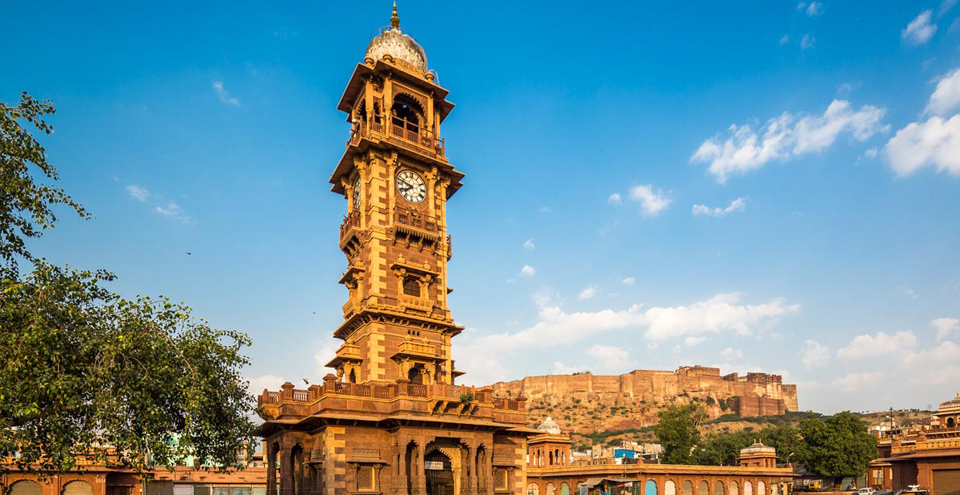 Ghanta Ghar, also known as the clock tower of Rajasthan, is situated in one of the busiest areas of Jodhpur, the Sadar Bazaar. It was constructed by Shri Sardar Singh Ji of Jodhpur. The Sadar Market is quite popular among tourists, who throng the streets to purchase Rajasthani textiles, clay figurines, miniature camels and elephants, marble inlay work and classic silver jewellery.
Ghanta Ghar, also known as the clock tower of Rajasthan, is situated in one of the busiest areas of Jodhpur, the Sadar Bazaar. It was constructed by Shri Sardar Singh Ji of Jodhpur. The Sadar Market is quite popular among tourists, who throng the streets to purchase Rajasthani textiles, clay figurines, miniature camels and elephants, marble inlay work and classic silver jewellery.
MAHAMANDIR TEMPLE
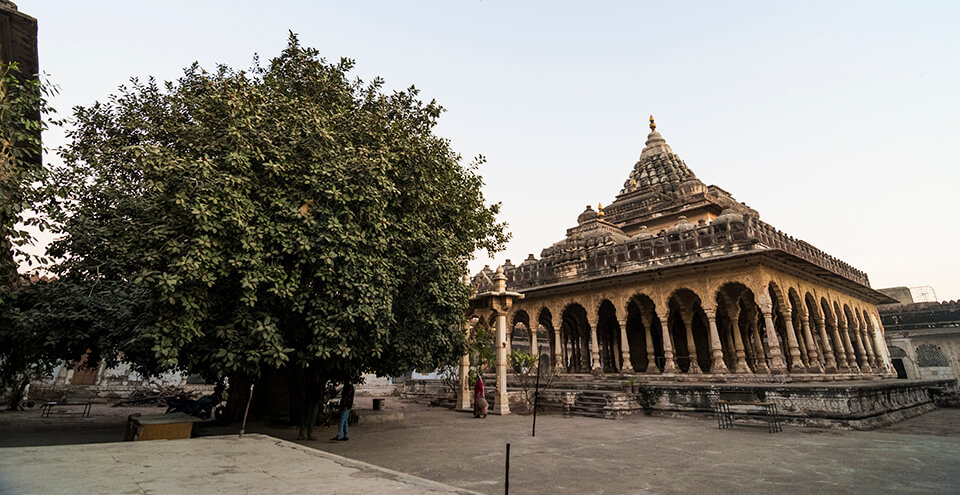 Mahamandir, meaning great temple, is a sanctified spot where tranquillity reigns supreme. Situated on Mandore road, the temple is an architectural wonder. It is supported by 84 pillars and ornamented with detailed designs and figures depicting various postures of Yoga.
Mahamandir, meaning great temple, is a sanctified spot where tranquillity reigns supreme. Situated on Mandore road, the temple is an architectural wonder. It is supported by 84 pillars and ornamented with detailed designs and figures depicting various postures of Yoga.
MANDALESHWAR MAHADEV
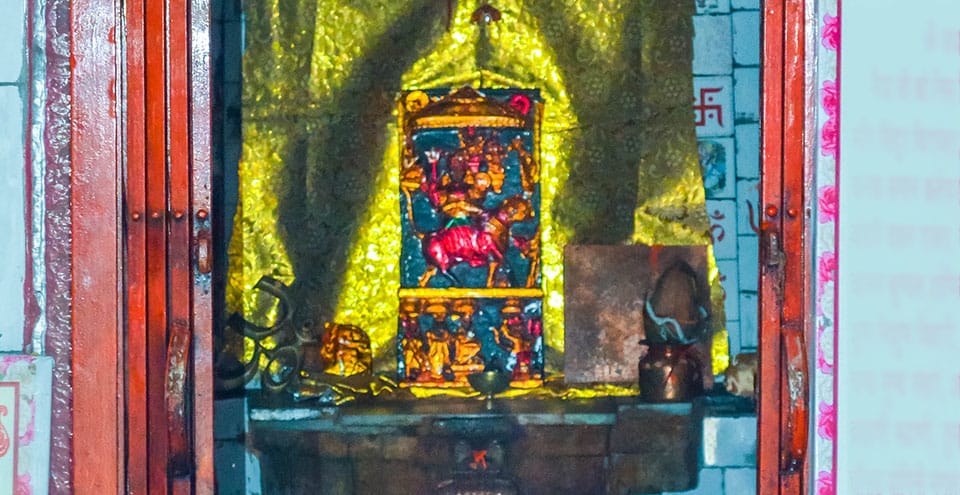 The Mandaleshwar Mahadev was built by Mandal Nath in AD 923. It is believed to be one of the oldest shrines in the city. The walls of the temple have some beautiful paintings of Lord Shiva and Goddess Parvati.
The Mandaleshwar Mahadev was built by Mandal Nath in AD 923. It is believed to be one of the oldest shrines in the city. The walls of the temple have some beautiful paintings of Lord Shiva and Goddess Parvati.
SARDAR SAMAND LAKE AND PALACE
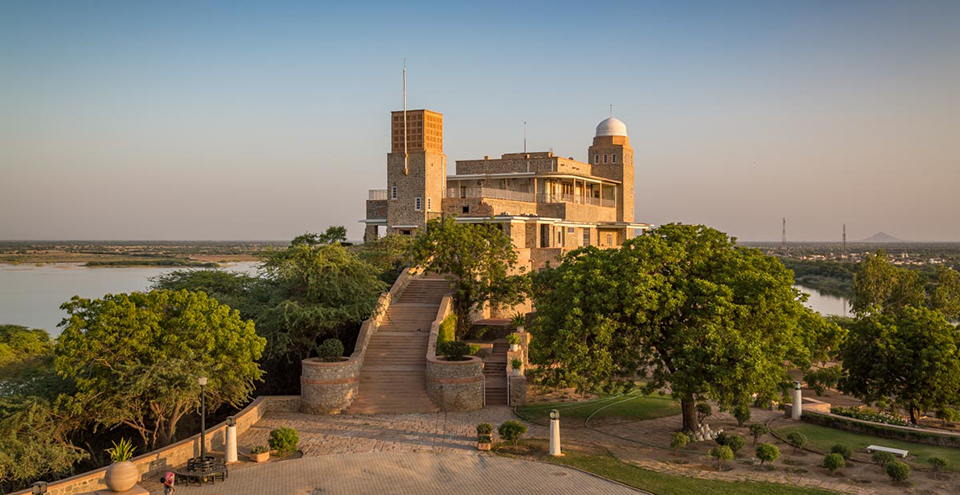 Built on the banks of the Sardar Samand Lake by Maharaja Umaid Singh in 1933, the Sardar Samand Lake Palace is a spectacular hunting lodge. It remains the royal family’s favourite retreat and houses a vast collection of African trophies and original watercolour paintings. The lake attracts several migratory and local birds such as the yellow-legged green pigeon, Himalayan griffon and Dalmatian pelican, making it a bird watcher’s paradise.
Built on the banks of the Sardar Samand Lake by Maharaja Umaid Singh in 1933, the Sardar Samand Lake Palace is a spectacular hunting lodge. It remains the royal family’s favourite retreat and houses a vast collection of African trophies and original watercolour paintings. The lake attracts several migratory and local birds such as the yellow-legged green pigeon, Himalayan griffon and Dalmatian pelican, making it a bird watcher’s paradise.
MASURIA HILLS
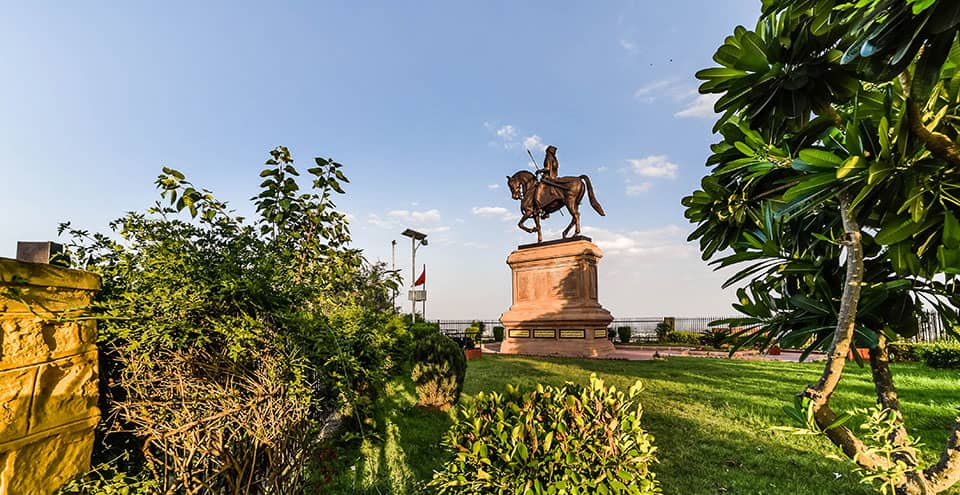 Masuria garden is one of the three most beautiful and famous gardens of Rajasthan. Located on top of the Masuria hill in the middle of Jodhpur, it is popular among devotees because of the centuries-old temple dedicated to a local deity, Baba Ramdev. There is a restaurant located here which offers a stunning panoramic view of the city.
Masuria garden is one of the three most beautiful and famous gardens of Rajasthan. Located on top of the Masuria hill in the middle of Jodhpur, it is popular among devotees because of the centuries-old temple dedicated to a local deity, Baba Ramdev. There is a restaurant located here which offers a stunning panoramic view of the city.
SHASTRI CIRCLE
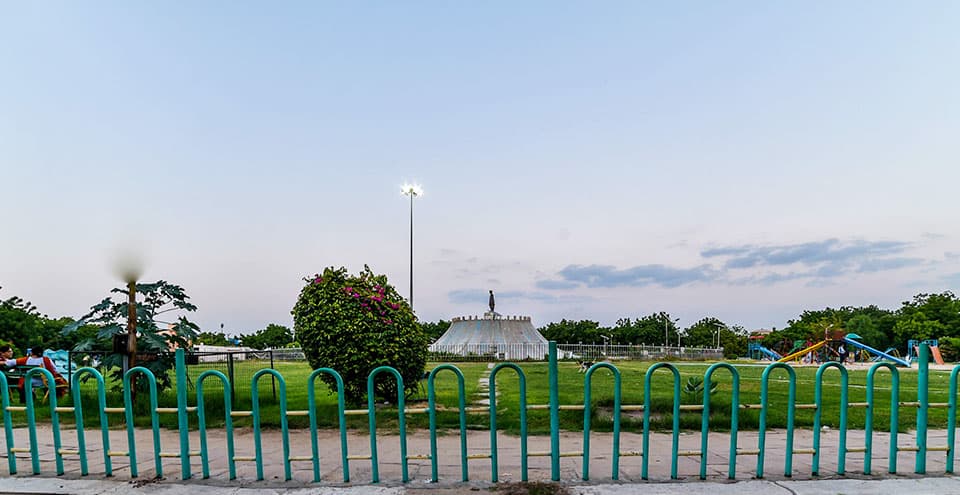 Shastri Circle is a traffic roundabout in the middle of Jodhpur City. While it has a job to do during the day, it is most spectacular at night, when it comes to life with lights and fountains. This draws locals as well as tourists to the spot.
Shastri Circle is a traffic roundabout in the middle of Jodhpur City. While it has a job to do during the day, it is most spectacular at night, when it comes to life with lights and fountains. This draws locals as well as tourists to the spot.
MANDORE
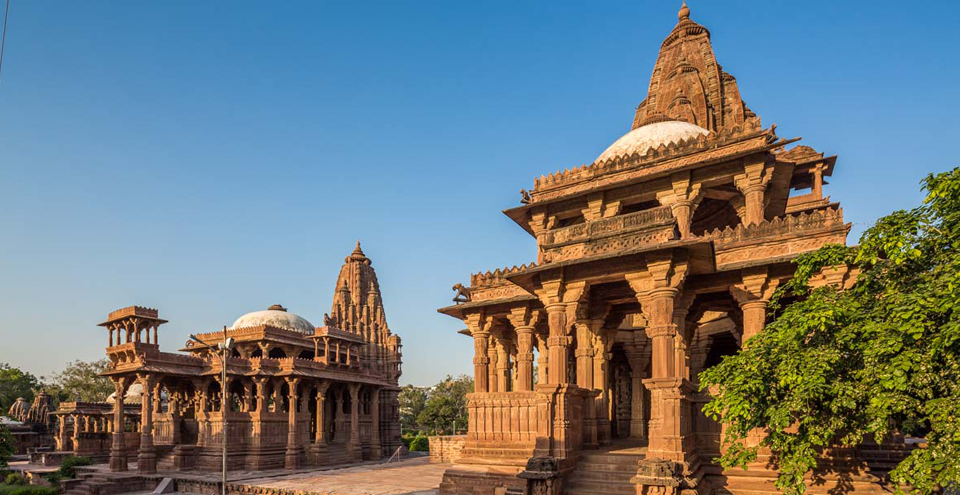 Towards the north of Jodhpur is the ancient capital of Marwar, Mandore. This area is of major historical importance and you will find the dewals or cenotaphs of Jodhpur’s former rulers. Unlike the original chhatri-shaped cenotaphs that are typical patterns of Rajasthan architecture, these are built along the lines of Hindu temples.
Towards the north of Jodhpur is the ancient capital of Marwar, Mandore. This area is of major historical importance and you will find the dewals or cenotaphs of Jodhpur’s former rulers. Unlike the original chhatri-shaped cenotaphs that are typical patterns of Rajasthan architecture, these are built along the lines of Hindu temples.
KAILANA LAKE
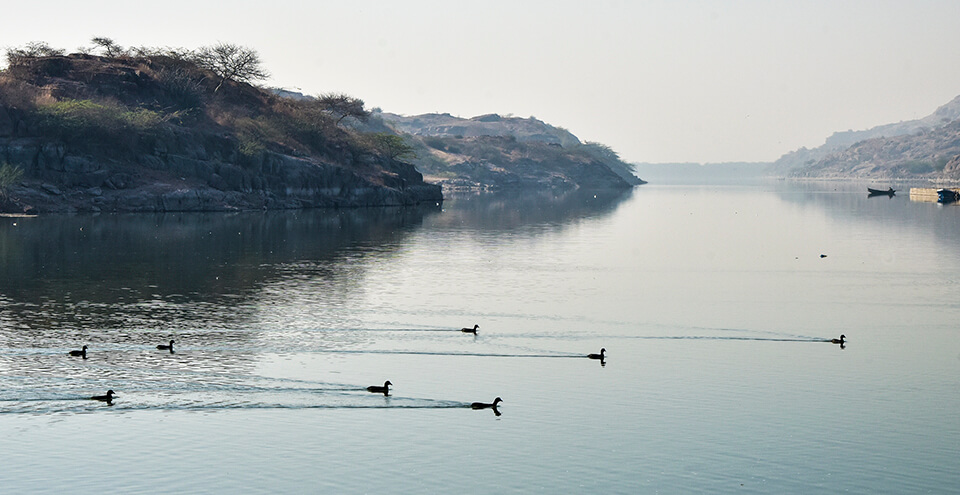 Situated on Jaisalmer road, this small artificial lake is an ideal picnic spot. It is like a canvas with a splash of romantic colours. The beauty of the lake stays with you long after you’ve experienced it. For those who’d like to go out on to the lake, boating facilities are also available through R.T.D.C.
Situated on Jaisalmer road, this small artificial lake is an ideal picnic spot. It is like a canvas with a splash of romantic colours. The beauty of the lake stays with you long after you’ve experienced it. For those who’d like to go out on to the lake, boating facilities are also available through R.T.D.C.
BALSAMAND LAKE
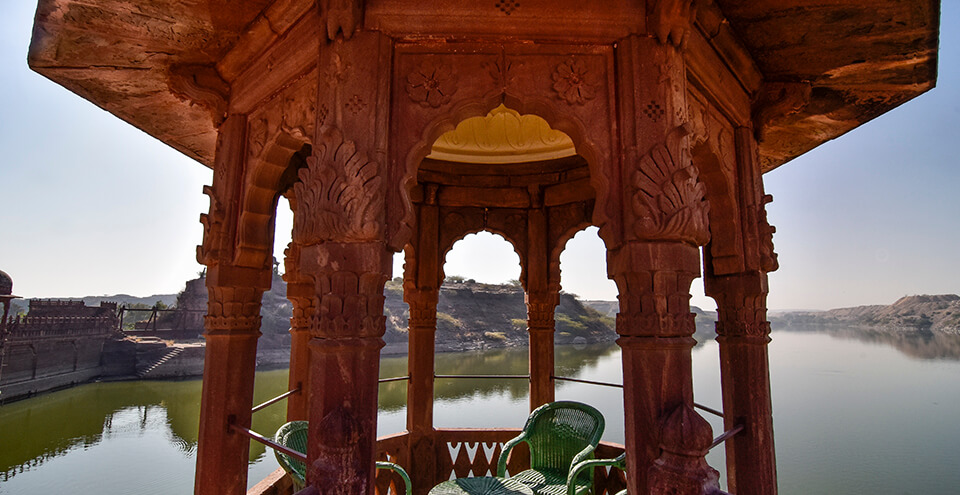 Balsamand Lake is about 5 kilometres from Jodhpur on the Jodhpur-Mandore Road. Built in 1159 AD, it was planned as a water reservoir to cater to Mandore. The Balsamand Lake Palace was built on its shore later as a summer palace. It is surrounded by lush green gardens that house groves of trees such as mango, papaya, pomegranate, guava and plum. Animals and birds like the jackal and peacock also call this place home. This lake is now a popular picnic spot with tourists and locals.
Balsamand Lake is about 5 kilometres from Jodhpur on the Jodhpur-Mandore Road. Built in 1159 AD, it was planned as a water reservoir to cater to Mandore. The Balsamand Lake Palace was built on its shore later as a summer palace. It is surrounded by lush green gardens that house groves of trees such as mango, papaya, pomegranate, guava and plum. Animals and birds like the jackal and peacock also call this place home. This lake is now a popular picnic spot with tourists and locals.
GUDA VILLAGE
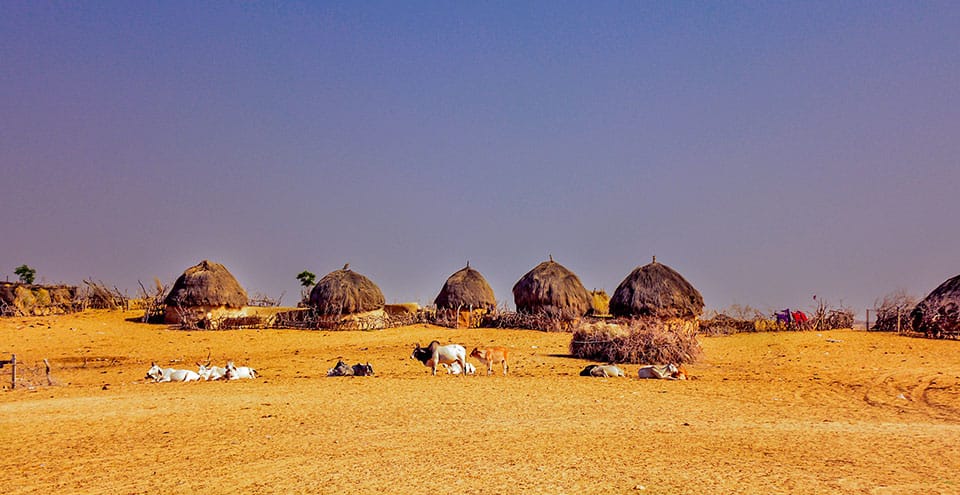 Guda, a Bishnoi village, is home to a vivid range of exotic wildlife and nature. It is a habitat for thousands of migratory birds in the area. One can often catch the Demoiselle crane frolicking at the lake. Antelopes and black bucks can also be spotted by the pond. This place is a must-visit for nature lovers.
Guda, a Bishnoi village, is home to a vivid range of exotic wildlife and nature. It is a habitat for thousands of migratory birds in the area. One can often catch the Demoiselle crane frolicking at the lake. Antelopes and black bucks can also be spotted by the pond. This place is a must-visit for nature lovers.
CHOKHELAO BAGH AND INTERPRETATION CENTER
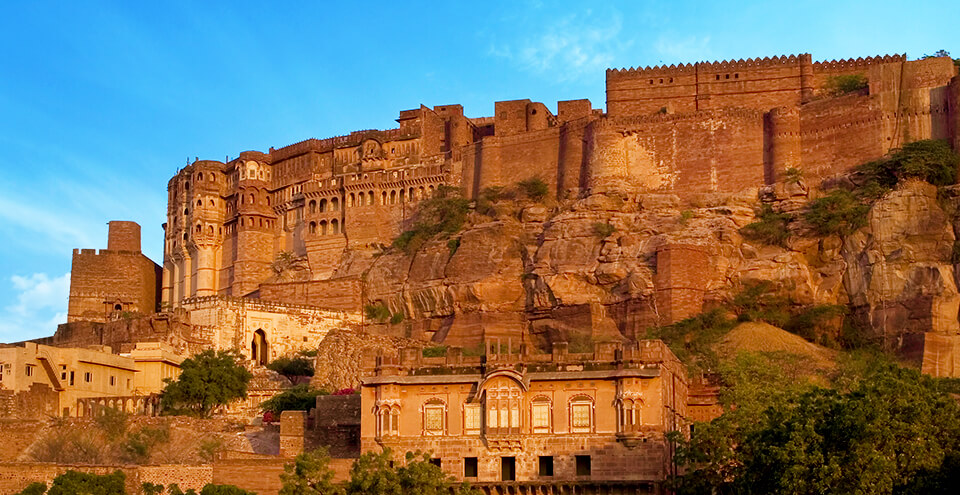 Visit the Chokhelao Bagh which sits at the foot of the Mehrangarh Fort. This over two hundred-year-old garden, complete with the scents, sounds, and textures of a garden of the eighteenth century Marwar has been turned into a Botanical Museum by the Mehrangarh Museum Trust by planting and in-situ displaying, exquisite endemically historic flora of Marwar region. The garden today, as in the past, is truly a celebration of nature as it captures the changing colors of the seasons in the upper terrace of flower beds. It is equally magical for night viewing when the Mehtab Bagh or moonlight garden laid out in the lower terrace comes alive with the white flowers ofchandni(Tabernaemontana coronaria) and the sweet- smellingkamini(Maurya exotia). Visit this gem of a garden and carry back the sensuous experience of eighteenth-century Rajput garden.
Visit the Chokhelao Bagh which sits at the foot of the Mehrangarh Fort. This over two hundred-year-old garden, complete with the scents, sounds, and textures of a garden of the eighteenth century Marwar has been turned into a Botanical Museum by the Mehrangarh Museum Trust by planting and in-situ displaying, exquisite endemically historic flora of Marwar region. The garden today, as in the past, is truly a celebration of nature as it captures the changing colors of the seasons in the upper terrace of flower beds. It is equally magical for night viewing when the Mehtab Bagh or moonlight garden laid out in the lower terrace comes alive with the white flowers ofchandni(Tabernaemontana coronaria) and the sweet- smellingkamini(Maurya exotia). Visit this gem of a garden and carry back the sensuous experience of eighteenth-century Rajput garden.
MEHRANGARH FORT AND MUSEUM
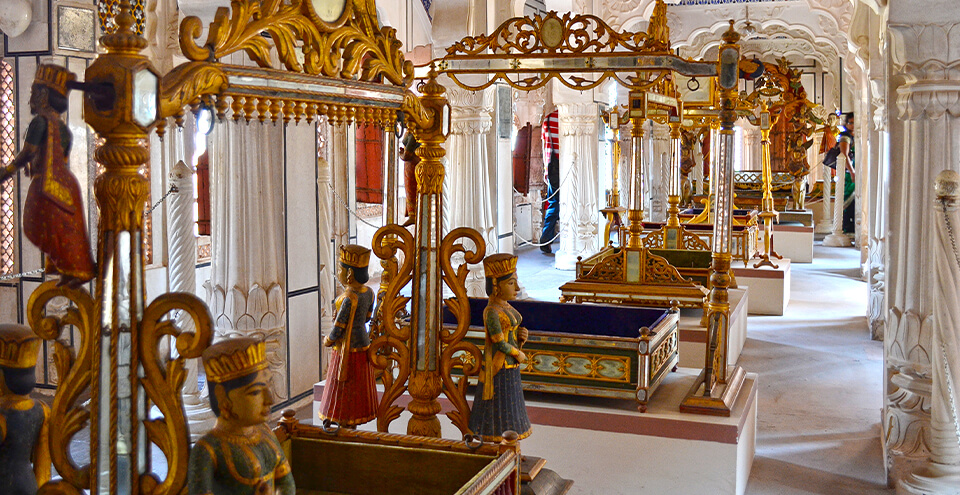 Mehrangarh, the fort of Jodhpur, crowns a rocky hill that rises 400 feet above the surrounding plain and appears both to command and to meld with the landscape. One of the largest forts in Rajasthan, it contains fine palaces and preserves in its museum many priceless relics of Indian courtly life. Jodhpur is named after its founder Rao Jodha, a fifteenth-century chief of the Rathore clan. In 1459, Rao Jodha (r. 1438-89) began to build a new fort six miles to the south of Mandore, his then capital. A strategic location was chosen for the new fort: an isolated rock providing high elevation and good natural defenses. The fort was named Mehrangarh, meaning ‘fort of the sun’ – a reference to the clan’s mythical descent from the Sun god ‘Surya’. Over five hundred yards long, the fort wall is seventy feet wide and rises in places to a height of one hundred and twenty feet. Today Mehrangarh Museum has a unique importance as a repository of the artistic and cultural history of the large areas of Central Rajasthan and Marwar-Jodhpur. The museum boasts exemplary examples of 17th, 18th and 19th-century collections for the fields of Miniature Paintings, Arms and Armours, Textiles, Decorative Arts and Furniture. The Museum has also participated in many international exhibitions all over the world, displaying and sharing the rich heritage of Marwar, and interacting with prestigious institutions in the field.
Mehrangarh, the fort of Jodhpur, crowns a rocky hill that rises 400 feet above the surrounding plain and appears both to command and to meld with the landscape. One of the largest forts in Rajasthan, it contains fine palaces and preserves in its museum many priceless relics of Indian courtly life. Jodhpur is named after its founder Rao Jodha, a fifteenth-century chief of the Rathore clan. In 1459, Rao Jodha (r. 1438-89) began to build a new fort six miles to the south of Mandore, his then capital. A strategic location was chosen for the new fort: an isolated rock providing high elevation and good natural defenses. The fort was named Mehrangarh, meaning ‘fort of the sun’ – a reference to the clan’s mythical descent from the Sun god ‘Surya’. Over five hundred yards long, the fort wall is seventy feet wide and rises in places to a height of one hundred and twenty feet. Today Mehrangarh Museum has a unique importance as a repository of the artistic and cultural history of the large areas of Central Rajasthan and Marwar-Jodhpur. The museum boasts exemplary examples of 17th, 18th and 19th-century collections for the fields of Miniature Paintings, Arms and Armours, Textiles, Decorative Arts and Furniture. The Museum has also participated in many international exhibitions all over the world, displaying and sharing the rich heritage of Marwar, and interacting with prestigious institutions in the field.
MACHIYA SAFARI PARK
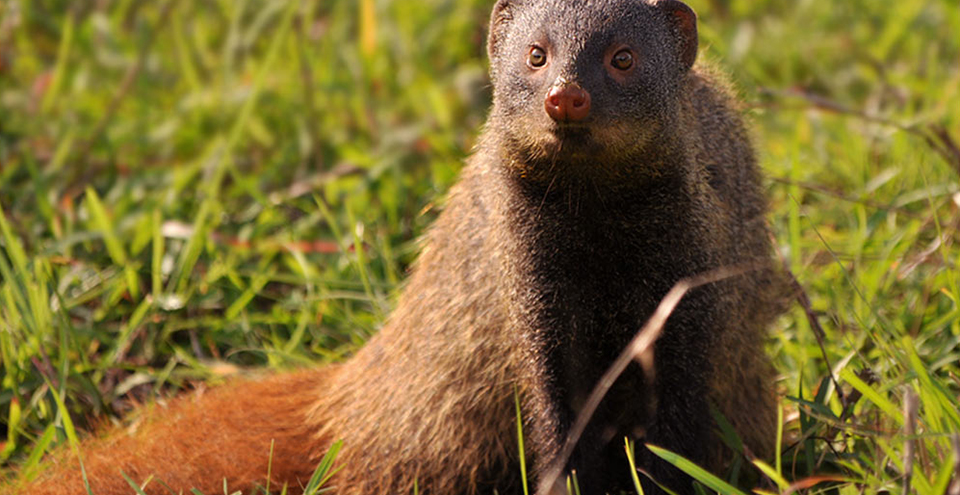 This park is situated on the way to Jaisalmer, about 1 kilometre from Kailana Lake. It offers a bird watching point for visitors and is also home to several animals such as deer, desert foxes, monitor lizards, blue bulls, hare, wild cats, mongoose, monkeys, etc. The park also offers spectacular views of sunset and should not be missed. Source http://www.tourism.rajasthan.gov.in/jodhpur.html
This park is situated on the way to Jaisalmer, about 1 kilometre from Kailana Lake. It offers a bird watching point for visitors and is also home to several animals such as deer, desert foxes, monitor lizards, blue bulls, hare, wild cats, mongoose, monkeys, etc. The park also offers spectacular views of sunset and should not be missed. Source http://www.tourism.rajasthan.gov.in/jodhpur.html